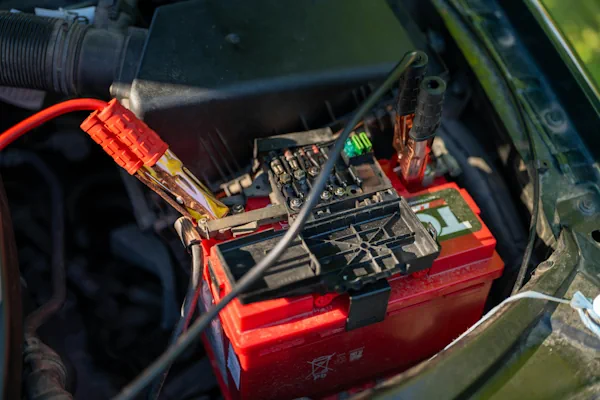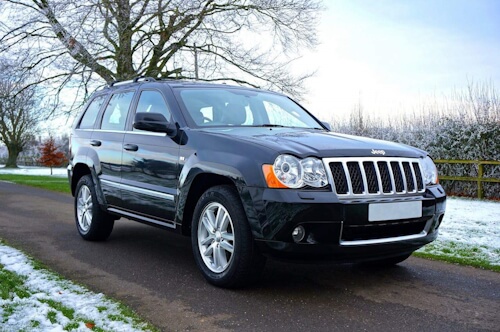Getting a flat tyre is never convenient—it always seems to happen when you're rushing to work, heading off on a road trip, or just picking up the kids from school. That's why keeping a spare tyre in your car is essential. But how long can you drive on the spare once you've swapped out the damaged tyre? Can you keep using it longer than recommended, or is that a risk? The answer depends on a few key factors. Not all spare tyres are made equal, and their durability varies. Some spares can go further than others, and not all are designed to replace a proper tyre permanently. Knowing how long you can safely drive on a spare can make all the difference in keeping you and your car in good shape.
Spare Tyre Considerations
1. Type of Spare Tyre
- Full-Size Spare: A full-size spare tyre identical to your regular tyres can be used indefinitely, provided it remains in good condition. A spare tyre that has remained unused for an extended period might not have the correct tyre pressure, which you will need to check. We also recommend reading the age of the tyre on its sidewall.
- Space Saver (Doughnut Tyre): Space saver doughnut tyres function as temporary spares but have limited usage. Manufacturers advise using these tyres only for distances between 100–150 km while maintaining speeds below 80 km/h because they lack the durability of standard tyres. Driving beyond this limit raises the chance that the tyre will fail.
- Run-Flat Tyres: Run-flat tyres enable continued driving after a puncture, yet their functionality lasts only for 80 km at speeds below 80 km/h.
2. Road Conditions
- If you're on smooth, sealed roads, your spare won't take much of a beating and will last longer.
- But if you're driving on rough, unsealed roads, a spare—especially a space saver—can wear out much quicker. Hitting potholes or uneven surfaces increases the risk of damage, so it's best to get your proper tyre sorted sooner rather than later.
- If you're driving at high speeds on the highway, heat can build up in the tyre, affecting tyre pressure, reducing handling, and increasing the risk of a tyre blowout.
3. Weather Conditions
- Driving on a spare tyre becomes dangerous in wet conditions because reduced traction leads to skidding.
- Hot weather challenges temporary spares because it causes them to expand and become weaker. Drive shorter distances while keeping your vehicle load light to stop blowouts from happening.
- The situation becomes more dangerous when driving on ice because worse traction can lead to unpredictable vehicle control.

4. Spare Tyre Maintenance
- Correct tyre pressure is crucial for a safe spare—check the pressure regularly to ensure it is road-ready.
- Even unused tyres age over time. After 5–6 years, the rubber can harden and crack, making the tyre risky to drive on.
- Where you store your spare matters. If it's exposed to heat, dirt, or moisture, it will break down quicker—spares kept under the car tend to wear out faster than those stored inside the boot.
Essential Safety Tips for Driving on a Spare Tyre
When using a spare tyre for driving, you should follow these safety tips to protect yourself and your vehicle.
- Stick to the Speed Limit: Most space-saver spares aren't designed for speeds over 80 km/h. Going faster increases the risk of losing control or damaging the tyre.
- Limit Your Driving Distance: Temporary spare tyres aren't built for long trips—100–150 km is the maximum (depending on the spare). Plan to replace it as soon as possible.
- Check the Pressure: Ensure your spare is inflated to the correct PSI before hitting the road. You'll find the recommended pressure in your car's manual or on a sticker inside the door frame.
- Drive Smoothly: Most spares don't handle like regular tyres. Avoid hard braking, sharp turns, and sudden movements to prevent accidents.
Get Your Tyres Checked & Replaced at Tyrepower
A spare tyre is there for emergencies, but it's not meant for long-term use. If you've recently used your spare or it’s been sitting in your car for years, now's the perfect time to check it. At Tyrepower, we provide professional tyre replacement services and expert advice to ensure your vehicle is safe. Whether you need a new spare, a complete set of tyres, or just some peace of mind, we're here to help. Find your nearest Tyrepower store offering this service and book a tyre check today!

























